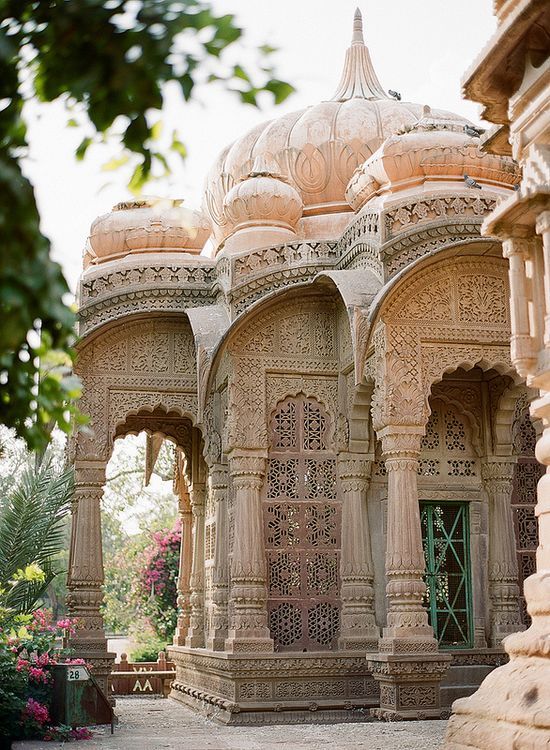#5070. Intricately Carved Facade of a Rajasthani Chhatri: Sandstone Lacework of Indian Architecture
The image showcases a magnificent example of Indian architecture—an exquisite chhatri (domed pavilion) executed in the Rajasthani style. The structure demonstrates the unsurpassed craftsmanship of traditional sandstone carving characteristic of Rajasthan's architectural heritage.
The pavilion's facade is distinguished by its rich lattice carvings and ornamental details. The main structure rests on elegant columns with expertly carved capitals supporting arched openings typical of Indo-Islamic architectural forms. Particularly noteworthy is the delicate stone jali (perforated screen) in the upper part of the walls, creating an effect of semi-transparency and forming a soft interplay of light and shadow inside the pavilion.
The dome features a bulbous shape with a ribbed surface, crowned with a traditional finial (kalash). The color palette of the facade presents warm sandy-pinkish hues of natural stone, enhancing the sense of harmony with the surrounding landscape. The pavilion is surrounded by a well-maintained garden with flowering plants, emphasizing its role as an element of a comprehensive landscape composition.
The proportional relationship of elements, the mathematical precision of the ornament, and the meticulous attention to the smallest details demonstrate the highest level of architectural artistry and a deep understanding of the interconnection between aesthetics and functionality, characteristic of the classical Indian architectural tradition.
